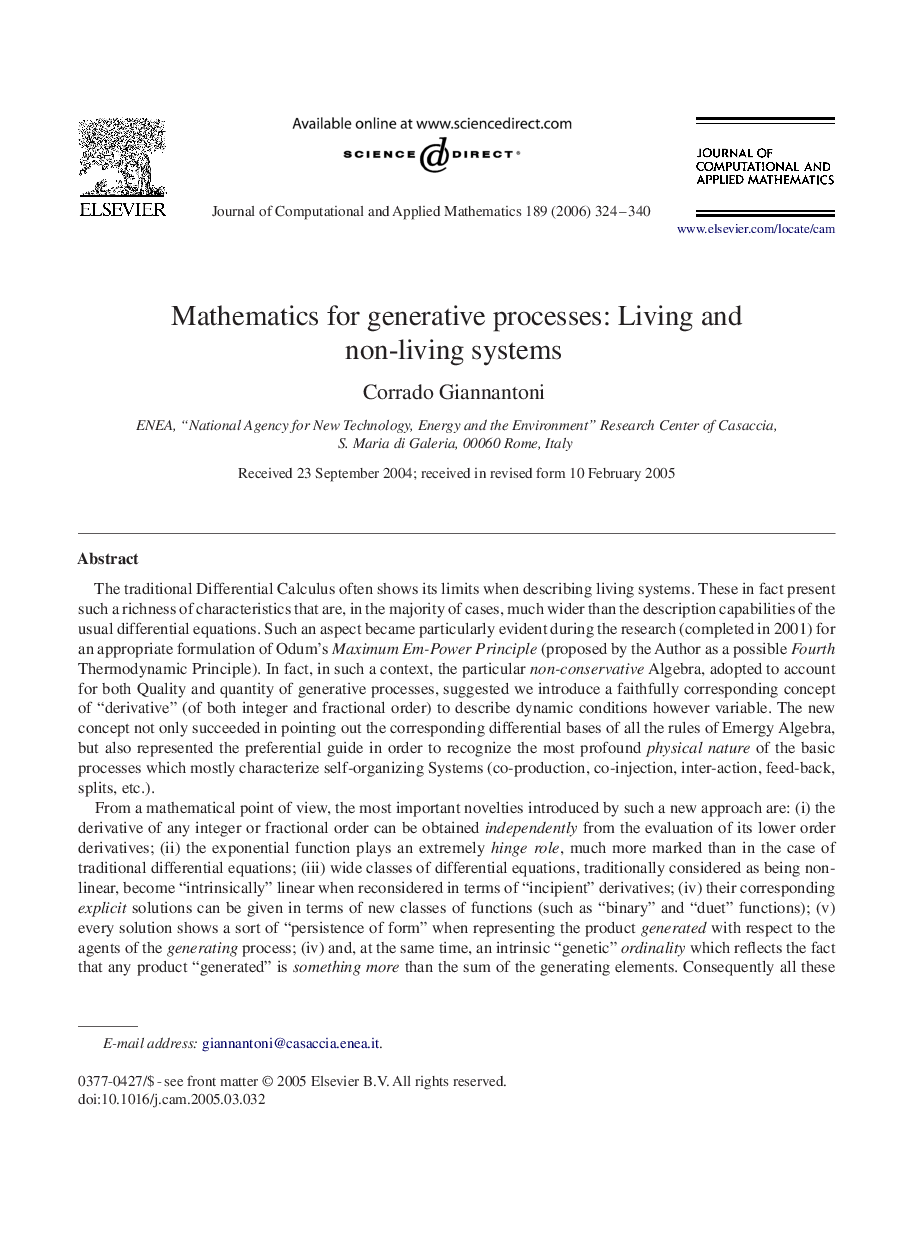| کد مقاله | کد نشریه | سال انتشار | مقاله انگلیسی | نسخه تمام متن |
|---|---|---|---|---|
| 4643458 | 1632059 | 2006 | 17 صفحه PDF | دانلود رایگان |

The traditional Differential Calculus often shows its limits when describing living systems. These in fact present such a richness of characteristics that are, in the majority of cases, much wider than the description capabilities of the usual differential equations. Such an aspect became particularly evident during the research (completed in 2001) for an appropriate formulation of Odum's Maximum Em-Power Principle (proposed by the Author as a possible Fourth Thermodynamic Principle). In fact, in such a context, the particular non-conservative Algebra, adopted to account for both Quality and quantity of generative processes, suggested we introduce a faithfully corresponding concept of “derivative” (of both integer and fractional order) to describe dynamic conditions however variable. The new concept not only succeeded in pointing out the corresponding differential bases of all the rules of Emergy Algebra, but also represented the preferential guide in order to recognize the most profound physical nature of the basic processes which mostly characterize self-organizing Systems (co-production, co-injection, inter-action, feed-back, splits, etc.).From a mathematical point of view, the most important novelties introduced by such a new approach are: (i) the derivative of any integer or fractional order can be obtained independently from the evaluation of its lower order derivatives; (ii) the exponential function plays an extremely hinge role, much more marked than in the case of traditional differential equations; (iii) wide classes of differential equations, traditionally considered as being non-linear, become “intrinsically” linear when reconsidered in terms of “incipient” derivatives; (iv) their corresponding explicit solutions can be given in terms of new classes of functions (such as “binary” and “duet” functions); (v) every solution shows a sort of “persistence of form” when representing the product generated with respect to the agents of the generating process; (iv) and, at the same time, an intrinsic “genetic” ordinality which reflects the fact that any product “generated” is something more than the sum of the generating elements. Consequently all these properties enable us to follow the evolution of the “product” of any generative process from the very beginning, in its “rising”, in its “incipient” act of being born. This is why the new “operator” introduced, specifically apt when describing the above-mentioned aspects, was termed as “incipient” (or “spring”) derivative.In addition, even if the considered approach was suggested by the analysis of self-organizing living Systems, some specific examples of non-living Systems will also be mentioned. In fact, what is much more surprising is that such an approach is even more valid (than the traditional one) to describe non-living Systems too. In fact the resulting “drift” between traditional solutions and “incipient” solutions led us to reconsider the phenomenon of Mercury's precessions. The satisfactory agreement with the astronomical data suggested, as a consequential hypothesis, a different interpretation of its physical origin, substantially based on the Maximum Em-Power Principle.
Journal: Journal of Computational and Applied Mathematics - Volume 189, Issues 1–2, 1 May 2006, Pages 324–340